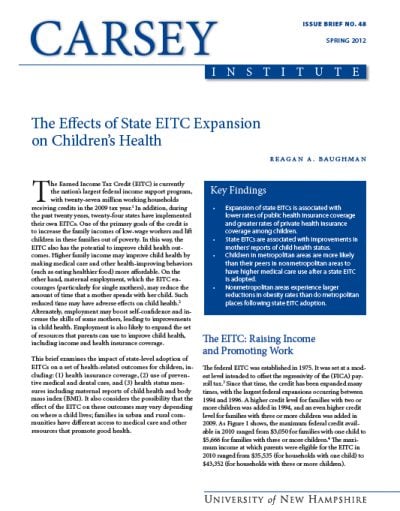More States Offering EITC
The number of states offering their own EITC supplements to working families has increased steadily over the last 20 years, with 24 states now offering a credit in addition to the federal EITC.

The Earned Income Tax Credit provides a boost in family income to more than 27 million working households across the United States. Over the past 20 years, 24 states have also adopted EITCs to provide additional support. This brief examines changes in children's health outcomes in the 14 states that adopted EITCs from 1996 to 2006.
One of the primary goals of the EITC is to help lift children in low-wage working families out of poverty, which may in turn improve children's health by making medical care and other healthy behaviors more affordable. While not the only factor, the state-level EITC appears to correlate to improved children's health outcomes on several measures, including: 1) more children were covered by private health insurance than public programs; 2) kids were more likely to receive preventive medical and dental care; and 3) mothers reported improved health status for their children, including a healthier body mass index.